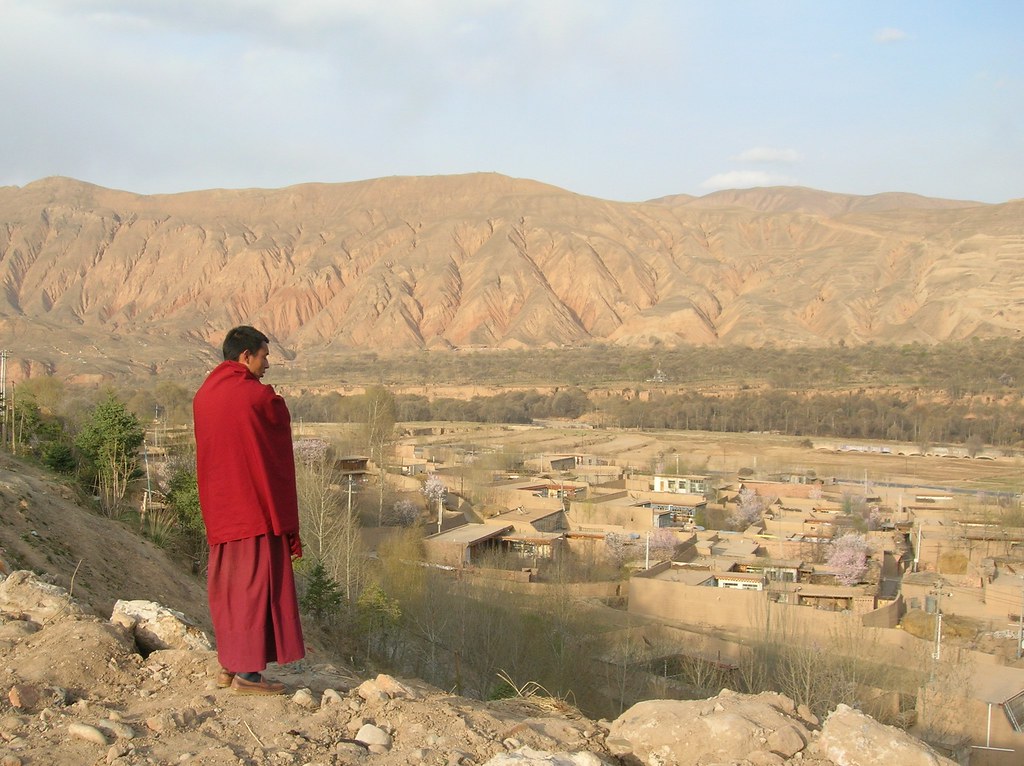
Momentarily blinded by the intense sunlight as I emerged from the dim interior of the monastery, I shut my eyes as I continued listening to what the monk had to say about the Tibetan protests in the area in 2008.
As my eyes slowly adjusted, I saw that he looked as calm as ever, and his voice betrayed no trace of emotion.
But his stories of forced detentions and of people who were never seen again were harrowing to say the least.
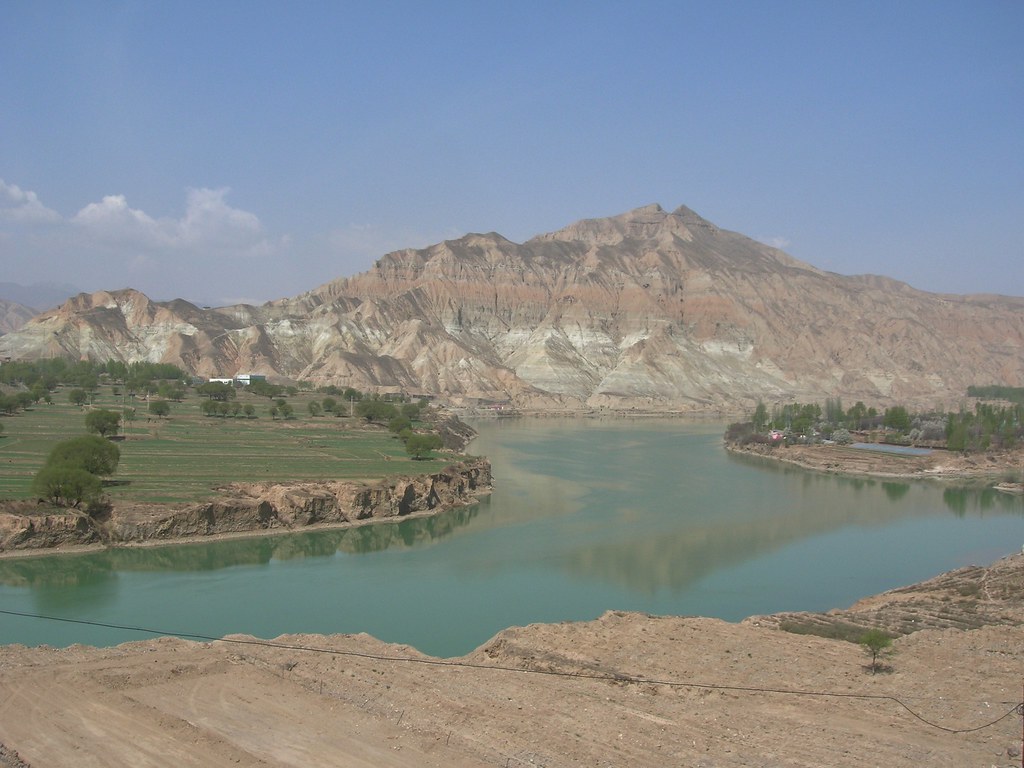
Painting a scene of what the area was like at the height of the widespread protests across the Tibetan world in 2008, the monk said, “All the monks in Tongren joined in the protests. As such, the town was locked down by security officers. No outsider was allowed into the area, and after a few days, the security officers started entering the monasteries to end the protests.”
He added, “We were beaten by batons and then captured and sent to detention cells.”
The monk also said he was held by police by seven days before he was released, and he claimed that there were other monks who were captured and never seen again.
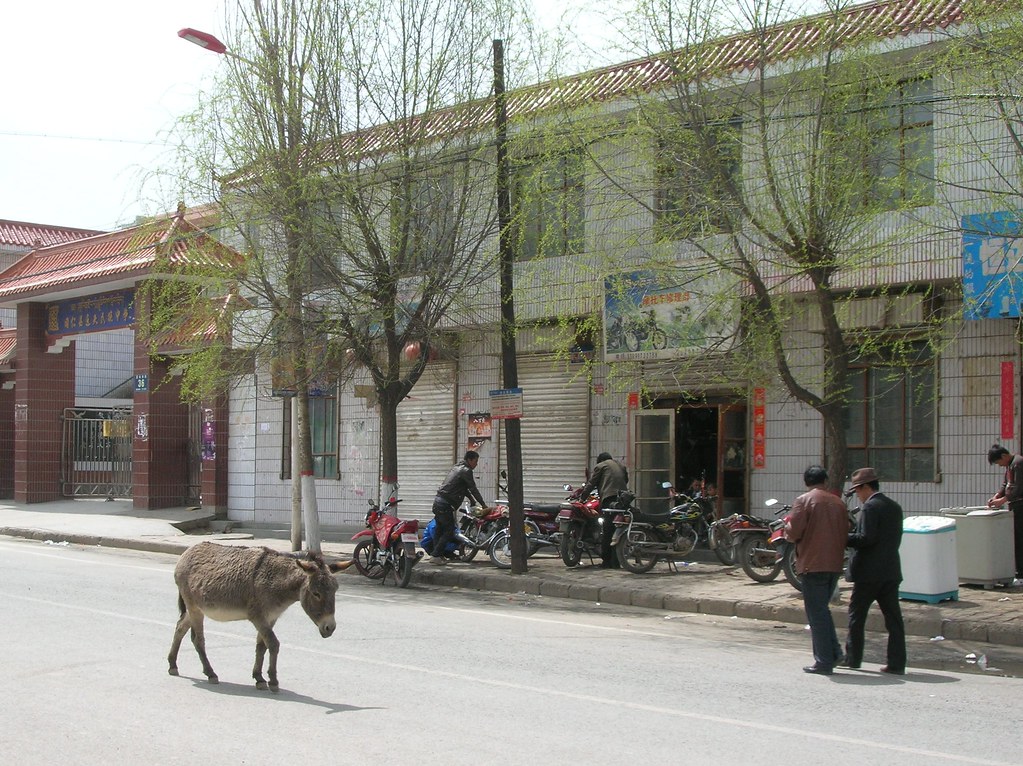
While it’s next to impossible to corroborate his account given that I was there as a tourist, information on the internet supported his claims of a police crackdown during that period, though not the extent.
The Associated Press, for instance, cited a worker at a Tibetan restaurant in downtown Tongren near the monastery who said police attacked protesters indiscriminately, and another report claimed that foreign journalists were ordered out of the Tibetan parts of Gansu and Qinghai provinces by police who told them it was for their “safety.”
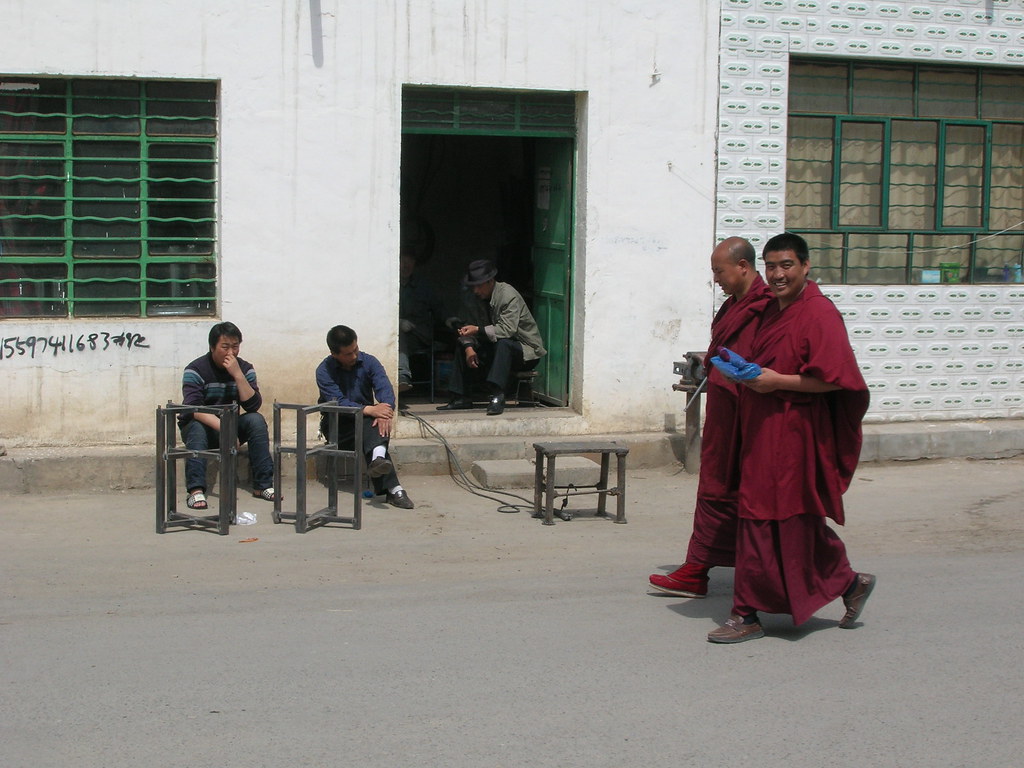
Today, there are no traces of what happened in Tongren in 2008.
The sleepy town, also known as Rebkong, sits on the edge of the Tibetan plateau in China’s Qinghai Province.
And its overwhelmingly Tibetan population is among the friendliest I’ve encountered in China.
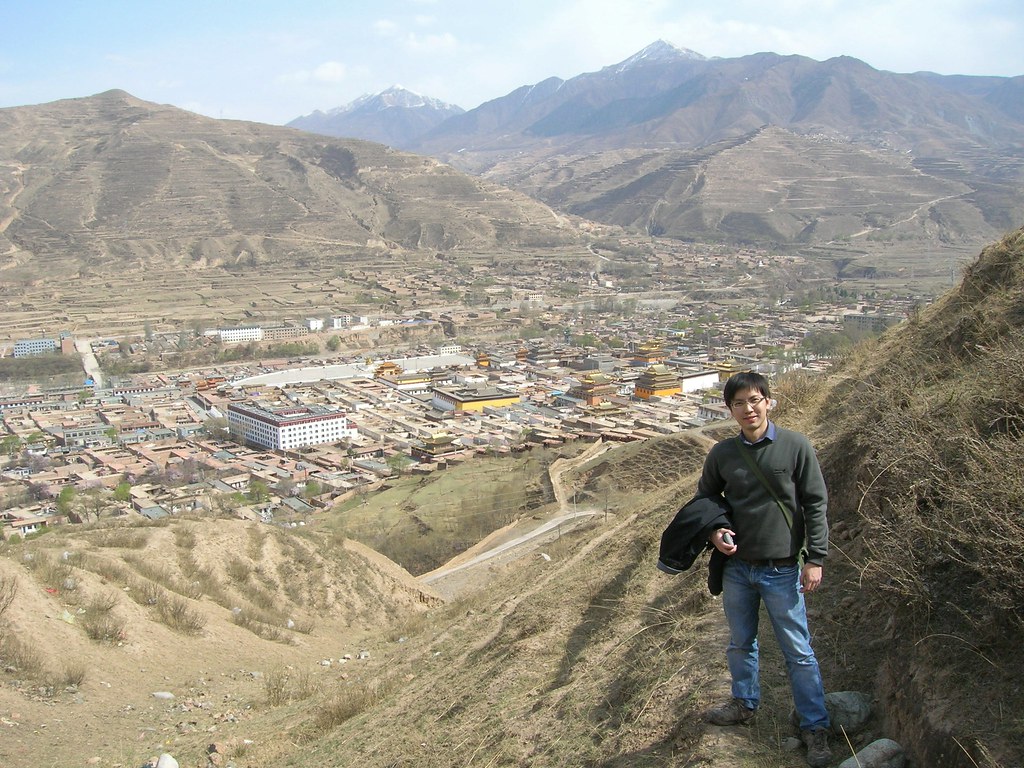
There was one day, for instance, when my friend and I were on the outskirts of town as the sun was setting.
As we were dreading the prospect of a two-hour walk back to the guesthouse in the dark, a car drove past, and the driver offered my friend and I a lift back to town for free.
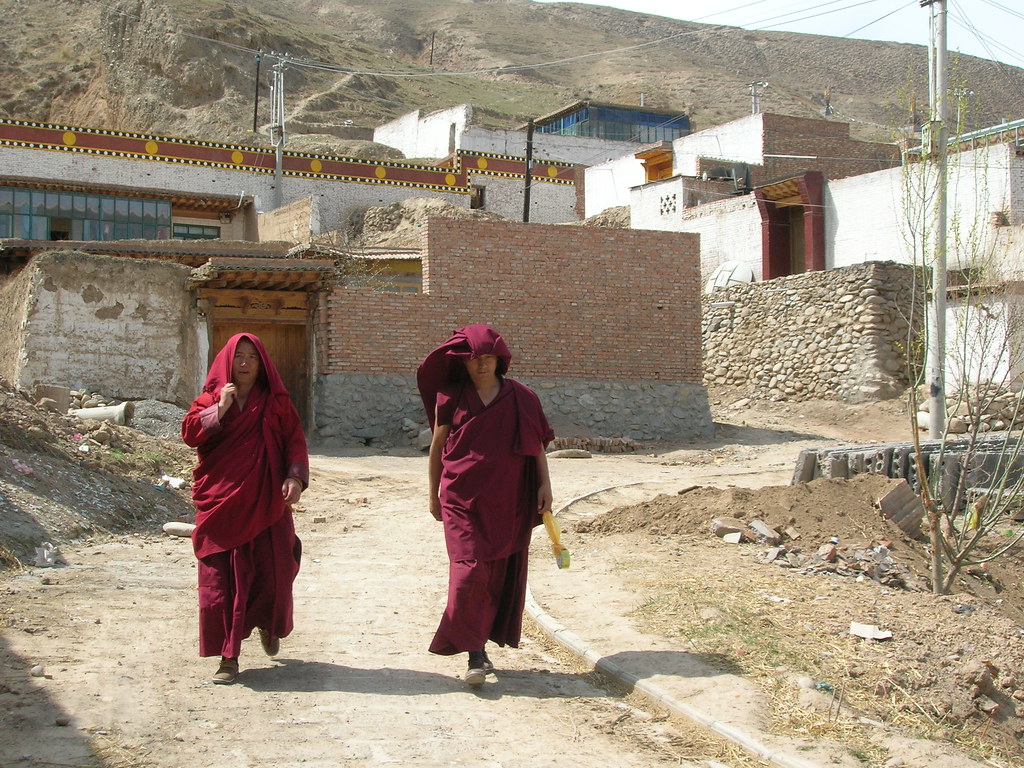
And in another instance, a shop owner was quite happy to chat with me even though I’ve already made it clear I was not going to purchase his artwork.
The main claim to fame for Tongren, however, is its thangkas (Tibetan sacred art) and painted statues.
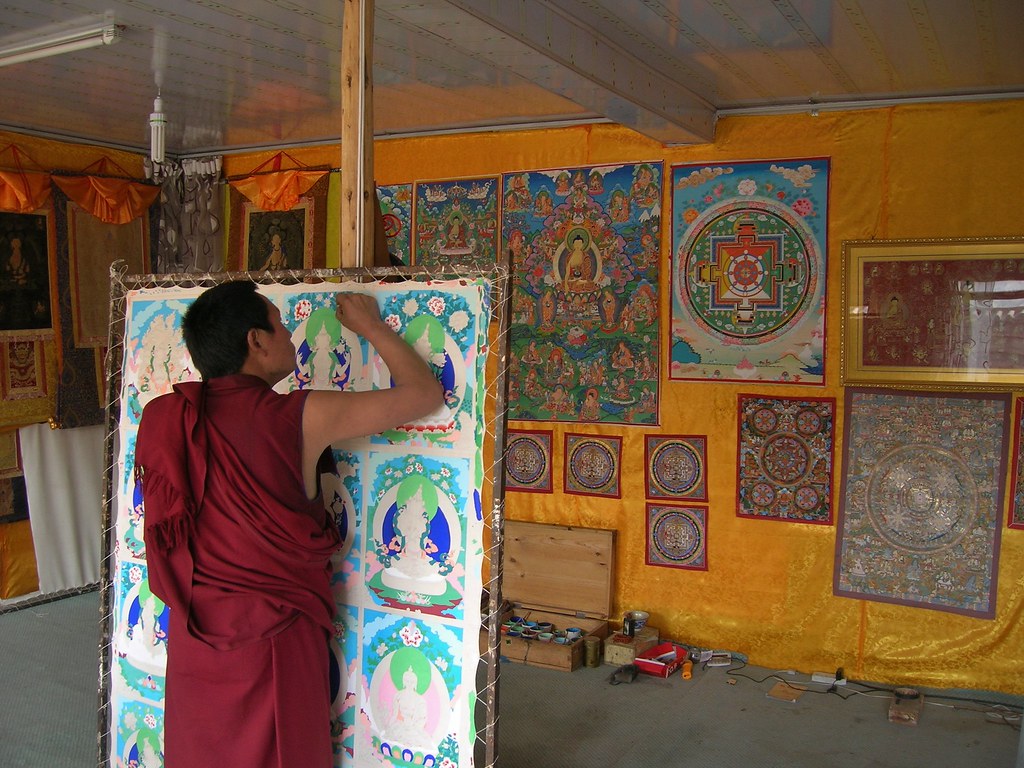
The town is said to produce the Tibetan world’s best thangkas, and the Wutun Monastery just outside town, apparently has a reputation unequalled in the Tibetan world for producing the best thangkas.
The Wutun Monastery is split into the upper and lower halves.
But while its thangka art is the headliner, my untrained aesthetic was unable to appreciate it, though I won’t deny the artwork is extremely exquisite.
I even thought of buying a small piece to hang at home so I can slowly study it.
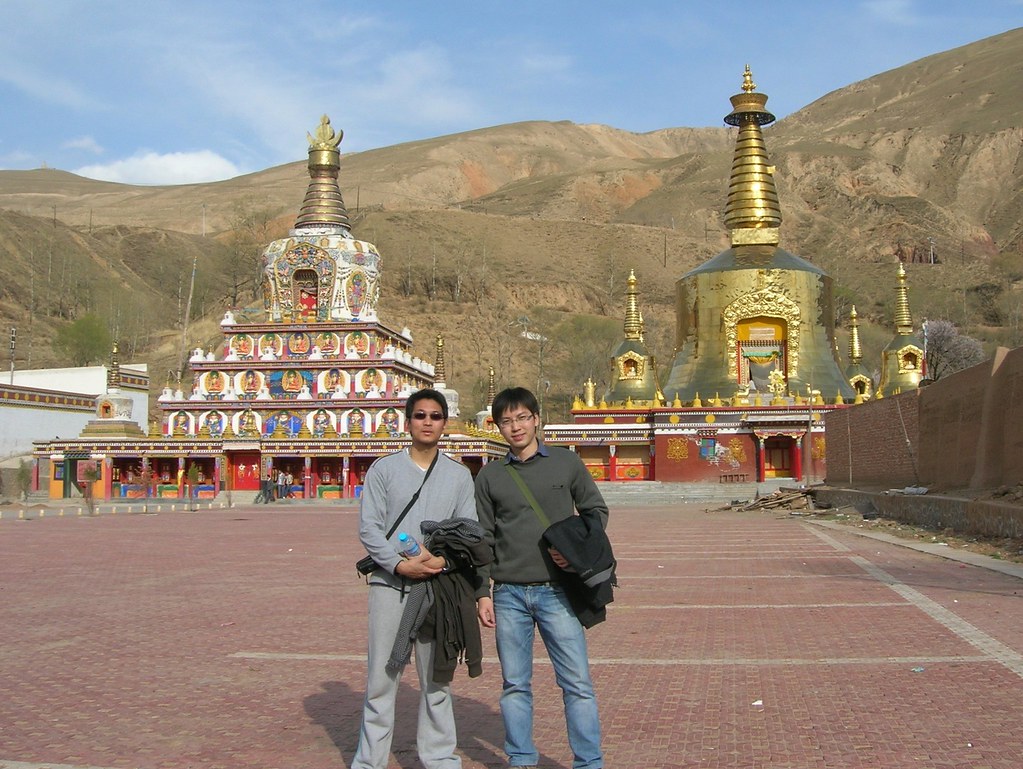
But thangka pieces don’t come cheap.
A postcard-sized thangka costs close to US$50, while poster-sized ones can cost as much as US$8,000.
That’s due to the effort required to produce one piece.
One of the artists told me that he could take up to a month to paint a small painting.
But even without the thangkas, the monastery was interesting enough to warrant a visit.
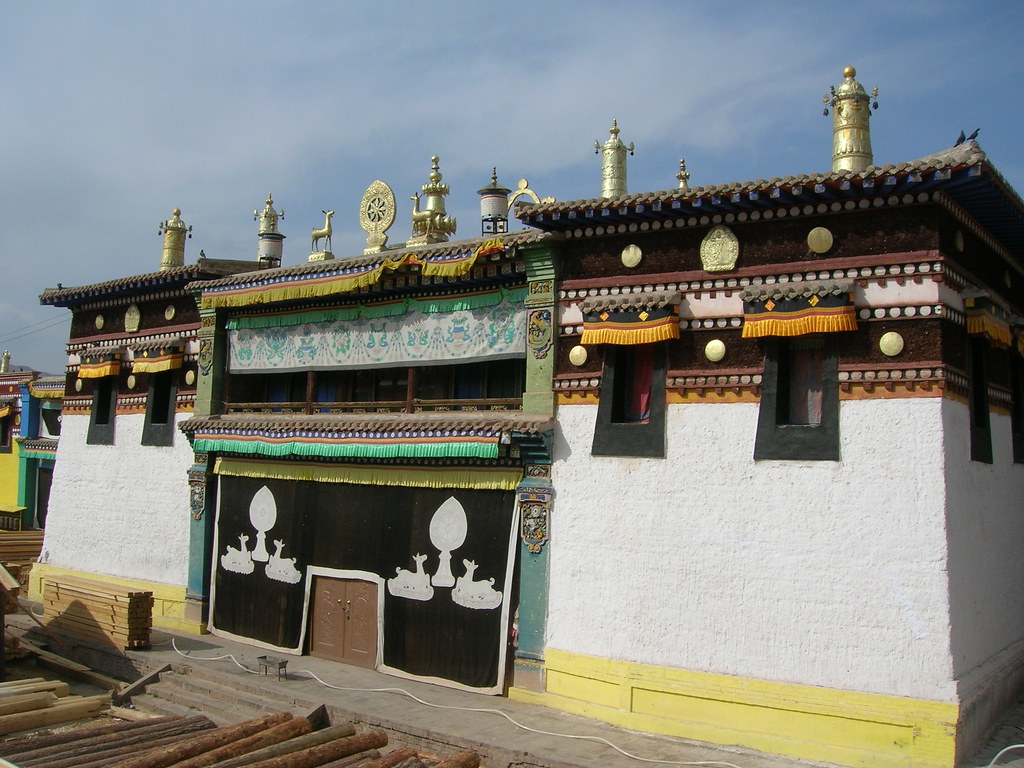
The architecture is distinctly Tibetan, with elaborate decorations and brightly painted wood carvings set against a cobalt blue sky.
And the main hall is a splendid affair with three large golden statues and many valuable and exquisite paintings.
The monk showing us around explained how they managed to save some of these paintings during the Cultural Revolution by turning the wooden panels of the valuable paintings around, and displaying the less valuable ones for the Red Guards to destroy.
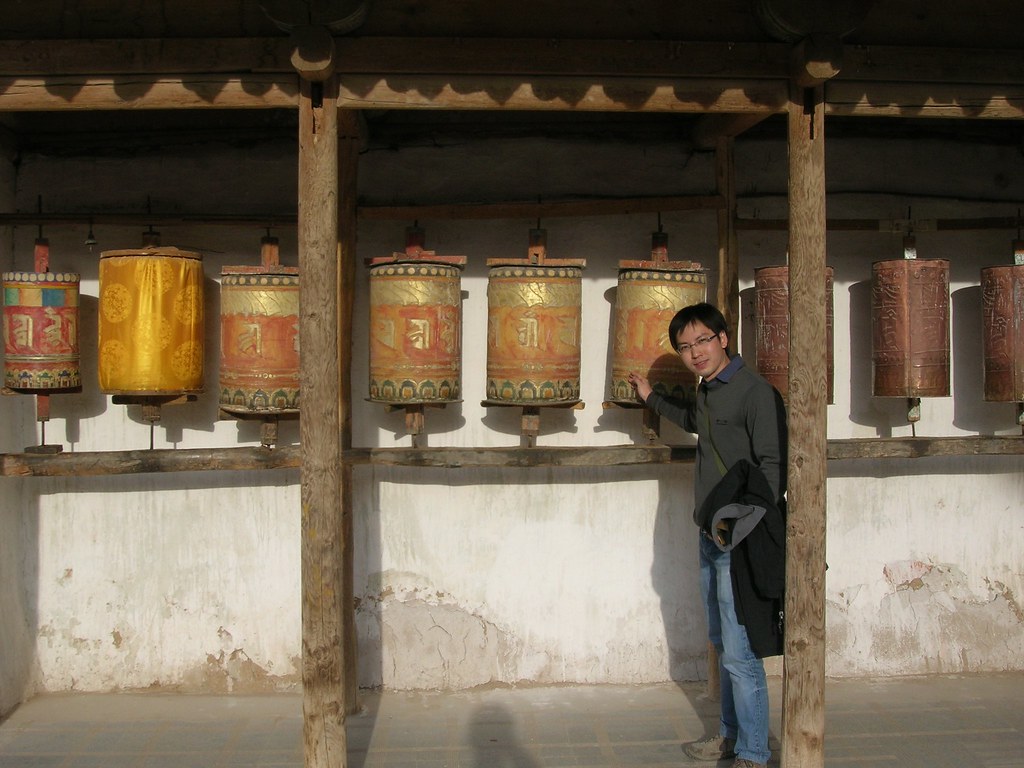
From Wutun Monastery, we headed across the valley to the 400-year-old Gomar Gompa, which has an enormous chorten (stupa) cloaked in gold and white.
But more fascinating perhaps, is the view from the site across the barren valley dotted with chortens and fluttering prayer flags.
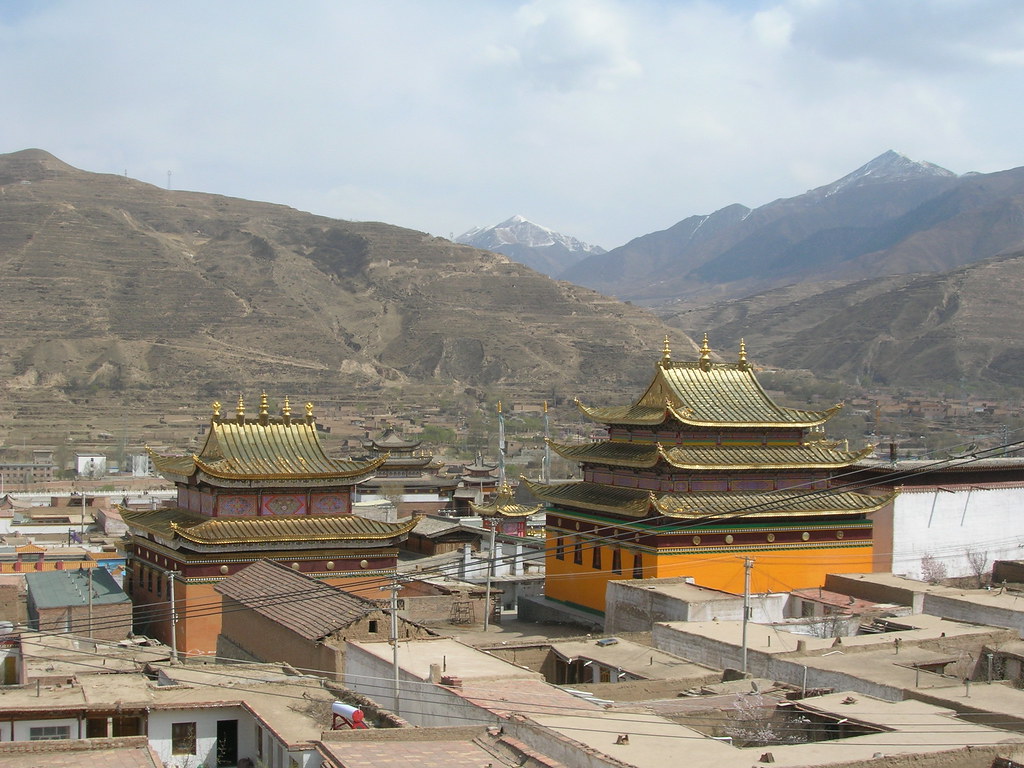
The main highlight for me at Tongren, however, was the sprawling Longwu Monastery which dates back to the 1300s.
It’s a jumble of Chinese and Tibetan style halls and monks’ residences that stretch all the way to the foot of the nearby Xishan Mountain.
Though most of the buildings are modern day constructions, a stroll through the grounds is still a very delightful way to spend a lazy afternoon.
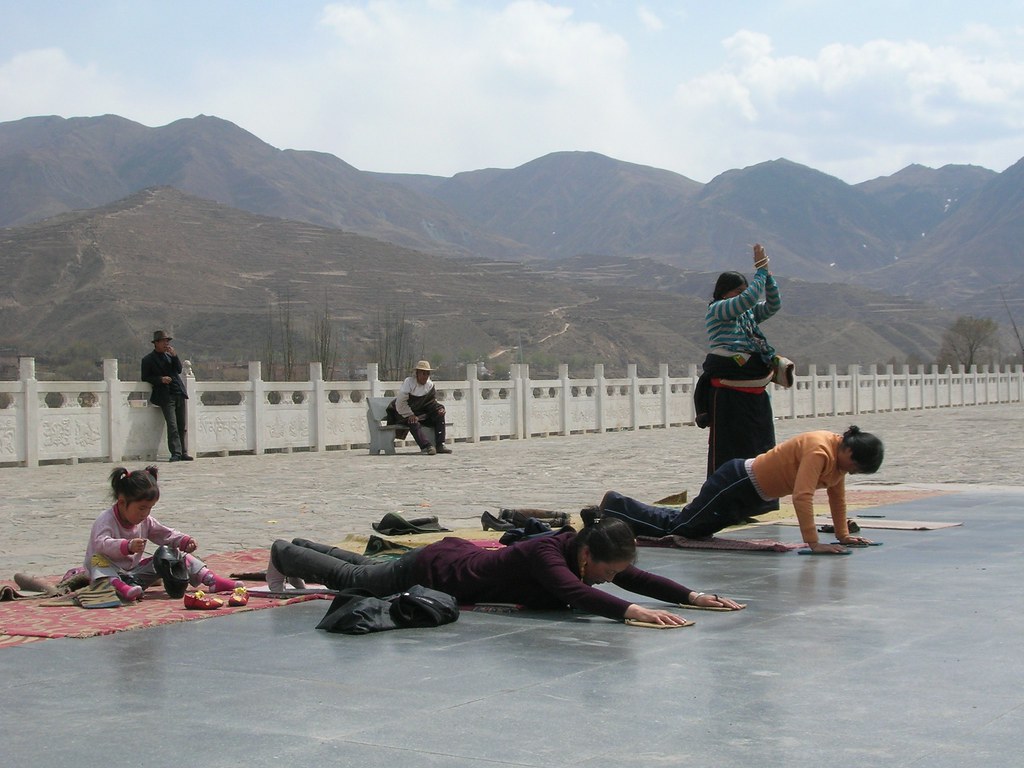
I spent a couple of hours just watching the crimson-robed monks go about their daily routines, Tibetan pilgrims prostrating by lying face-down on the ground and stretching out their arms and legs, and smelling the ever-present, slightly rancid smell of yak butter from fuel lamps.
If I didn’t know any better, I’d think I was already in Tibet.














Hi Jeremy!
I would like to get in touch with you about your trip to Tongren 2014.